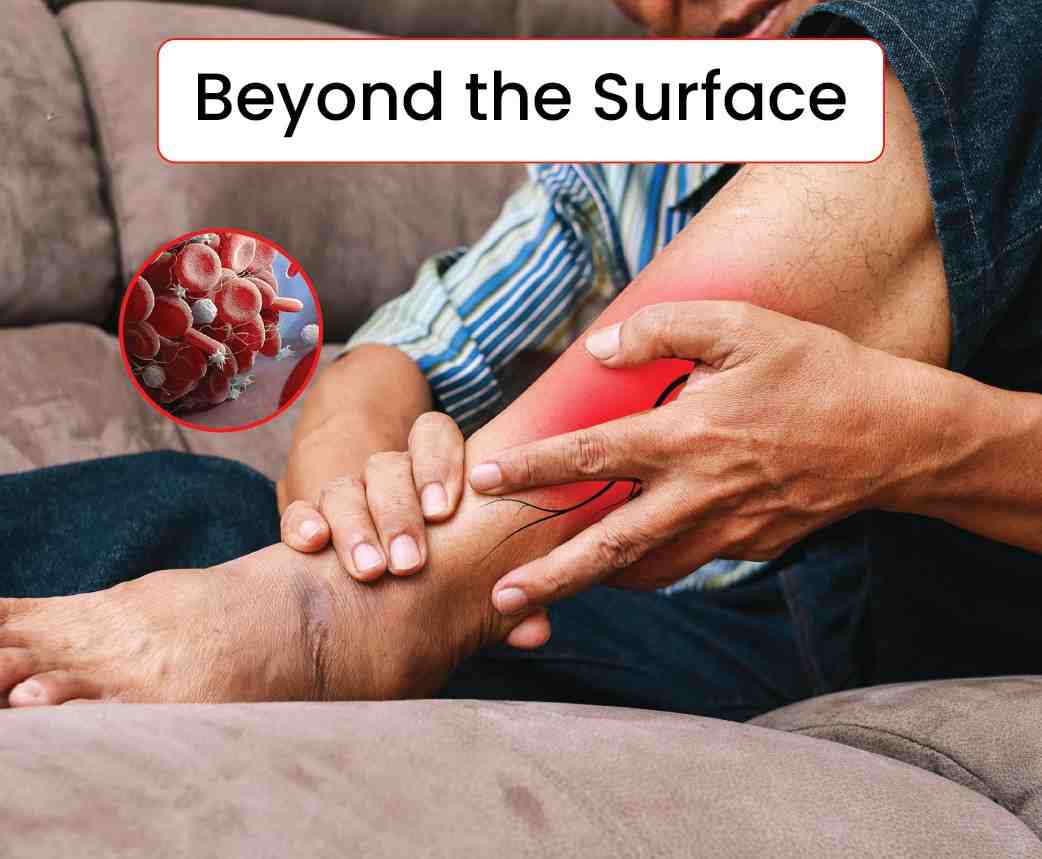Varicose veins are more than just a cosmetic concern. While they may seem like harmless bulging, twisted veins commonly found in the legs, varicose veins can actually be an indicator of a more severe health risk: blood clots. Understanding the connection between varicose veins and the potential for blood clots, such as deep vein thrombosis (DVT), is crucial for those looking to protect their vascular health. Here, we explore why varicose veins should not be ignored and how they relate to the risk of blood clots.
What Are Varicose Veins?
Varicose veins are swollen, enlarged veins that usually appear just under the surface of the skin, particularly in the legs and feet. They develop when the valves inside veins—responsible for ensuring one-way blood flow toward the heart—become weak or damaged. When these valves fail, blood starts to pool in the vein, causing it to stretch and twist, resulting in the visible bulging appearance of varicose veins.
While varicose veins often cause discomfort, aching, or heaviness, they are generally not considered life-threatening on their own. However, they can serve as a warning sign for more severe underlying conditions, particularly related to blood flow issues and blood clots.
How Blood Clots Form in Varicose Veins
The formation of blood clots, or thrombosis, is closely related to blood flow and vein health. Blood clots can form when blood flow is slow or stagnant, when blood vessels are damaged, or when certain conditions increase blood clotting tendencies. With varicose veins, all these risk factors can come into play. The twisted structure of varicose veins can disrupt normal blood flow, making it harder for blood to circulate back to the heart. This pooling and stagnation create an environment where blood clots are more likely to form.
In the case of varicose veins, blood clots can occur both in superficial veins—known as superficial vein thrombosis (SVT)—and in deeper veins, leading to the more serious deep vein thrombosis (DVT). While SVT is less likely to lead to severe complications, DVT poses a significant health risk. If a DVT clot dislodges, it can travel through the bloodstream and reach the lungs, causing a pulmonary embolism, which can be life-threatening.
Understanding the Link Between Varicose Veins and DVT
Research suggests that people with varicose veins are at a higher risk of developing DVT. A study published in the Journal of the American Medical Association indicated that individuals with varicose veins are five times more likely to develop DVT than those without varicose veins. This risk is especially concerning for older adults, those who have a sedentary lifestyle, or individuals with certain predisposing factors, such as obesity, smoking, or a family history of clotting disorders.
Recognizing Symptoms and Seeking Treatment
or individuals with varicose veins, it’s essential to recognize the symptoms of blood clots early. Common symptoms of DVT include swelling, pain, and redness in the affected leg, as well as a feeling of warmth over the vein. In some cases, however, blood clots may not produce noticeable symptoms until they cause more severe complications, like a pulmonary embolism. Therefore, it’s advisable to seek medical advice if you have varicose veins and experience any sudden leg pain or swelling.
Preventive measures, such as regular exercise, maintaining a healthy weight, and avoiding prolonged periods of sitting or standing, can help reduce the risk of developing blood clots. Compression stockings are often recommended to improve blood flow and reduce discomfort associated with varicose veins. In some cases, medical or surgical treatments like sclerotherapy, laser treatments, or vein stripping may be necessary to alleviate varicose veins and reduce the risk of blood clots.
Final Thoughts: Varicose Veins as a Warning Sign
While not every case of varicose veins will lead to a blood clot, the connection between varicose veins and potentially life-threatening clots is well-documented. Treating varicose veins and improving vascular health may help mitigate the risk of DVT, especially for those with other risk factors. Early detection, preventive care, and, if necessary, medical intervention can significantly reduce the chances of complications, making it essential to take varicose veins seriously as a potential warning sign of deeper circulatory issues.
In conclusion, varicose veins are more than a cosmetic issue—they can signal the possibility of deadly blood clots. Understanding this connection empowers individuals to take proactive steps in maintaining their vein health and preventing potentially life-threatening conditions.




